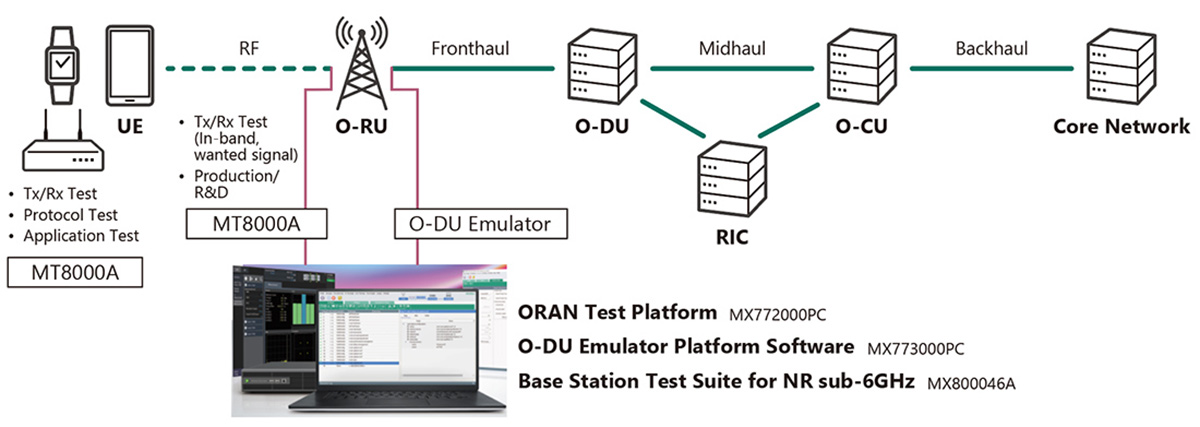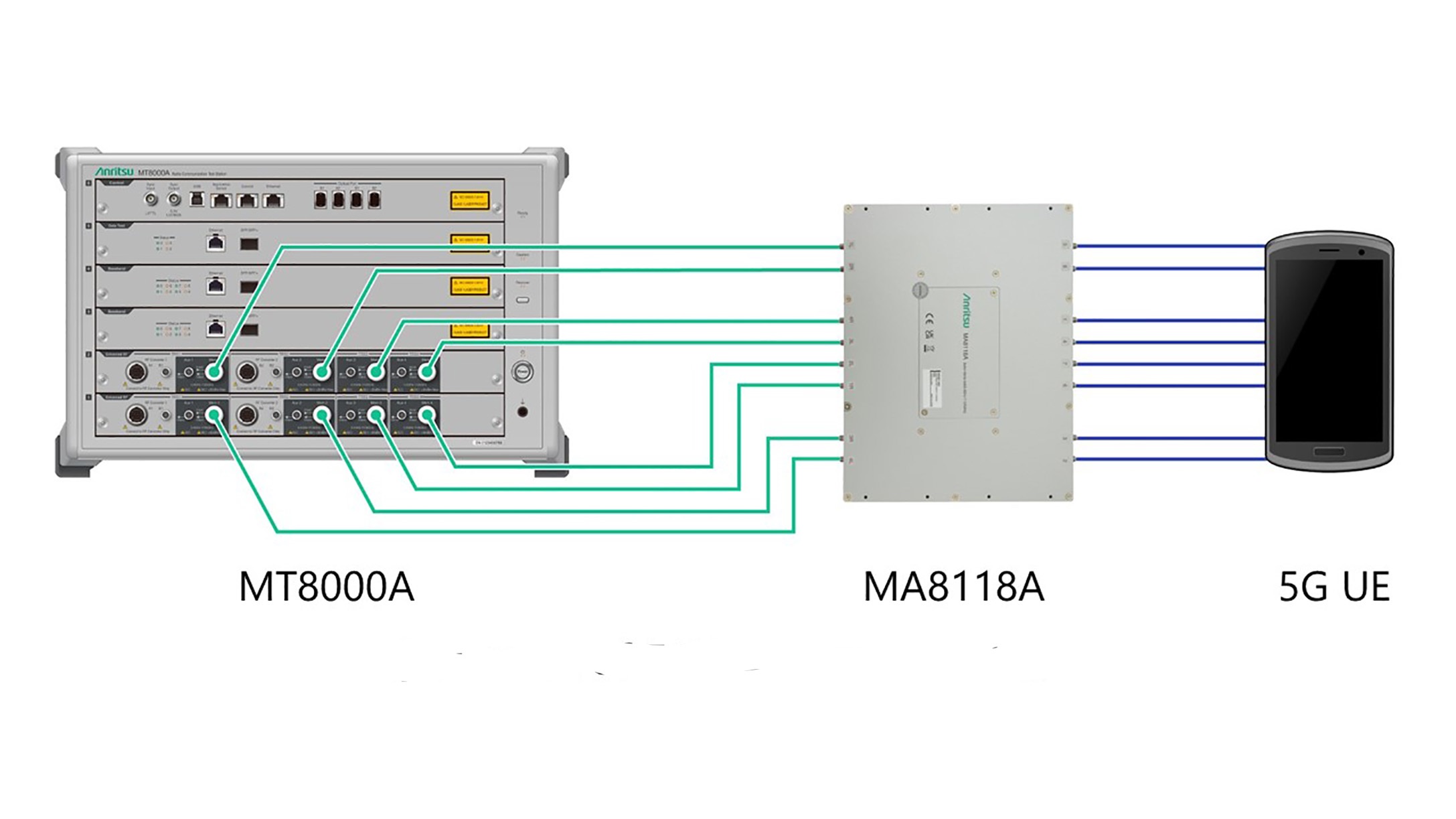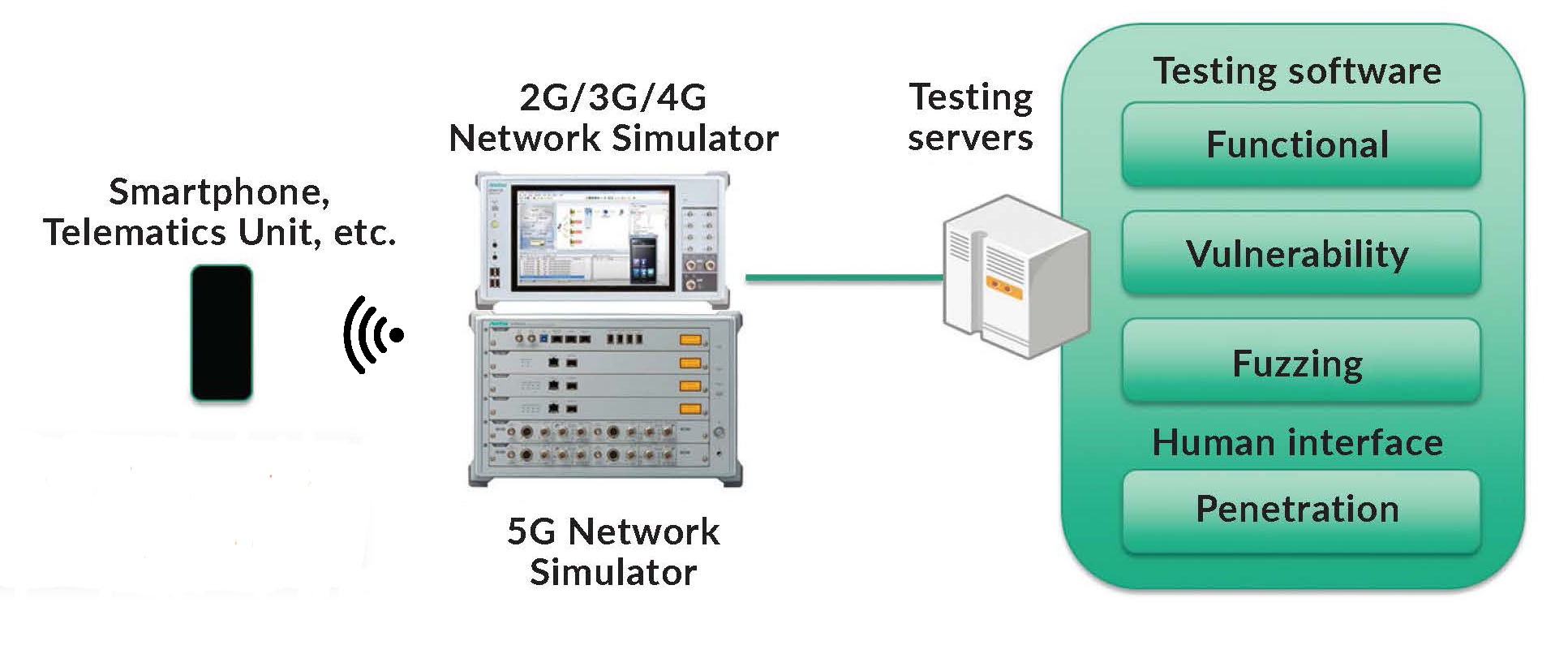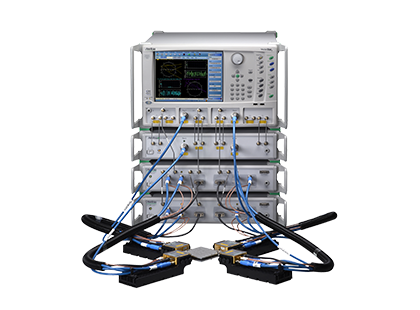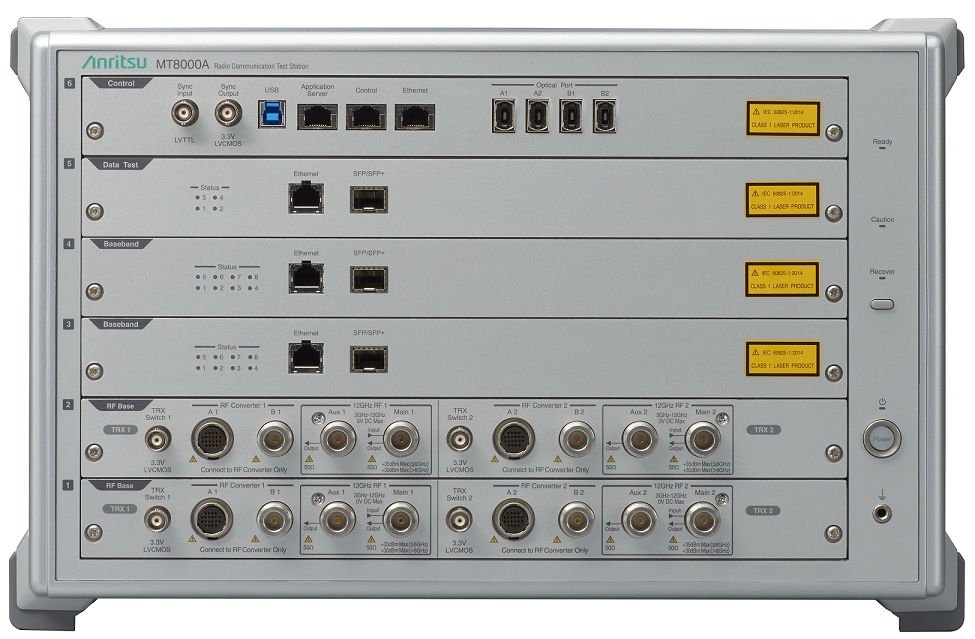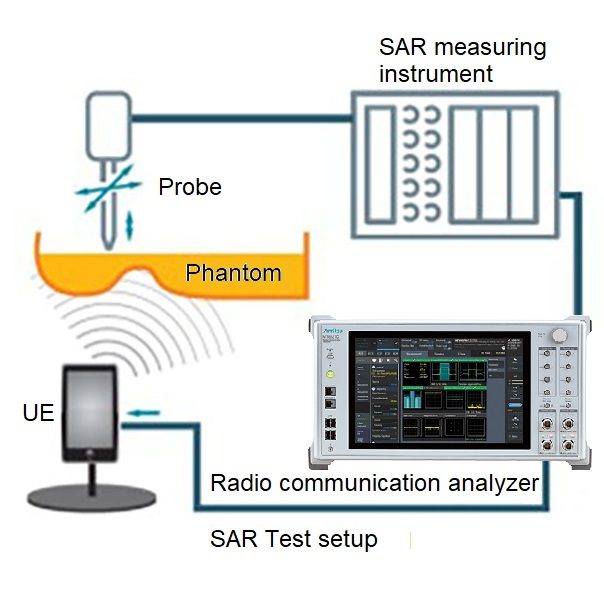Anritsu Company announces the launch of their new inline power sensor MA24103A which is designed to measure accurate Peak and True-RMS average power measurements from 25 MHz to 1 GHz and 2 mW to 150 W power range. Several applications demand accurate peak and average power measurements well below the frequency range of 1 GHz.…
How do you test an Open RAN installation?
Open RAN telecom networks need testing for each disaggregated component, but that’s not enough. End-to-end testing is also necessary. In How do Open RAN interfaces work?, we covered how Open RAN redefines traditional RAN architecture by disaggregating it into three primary components: the radio unit (RU), distributed unit (DU), and centralized unit (CU). This paradigm…
System test 5G antennas for autonomous vehicles using existing EMC chambers
RanLOS, TOYO Corporation, AeroGT Labs, and Anritsu announce the availability of the first 5G antenna over-the-air (OTA) measurement system engineered with RanLOS’ OTA test solution and Anritsu’s 5G Radio Communication Test Station MT8000A. The new system represents a significant step forward in enabling advancements in 5G connected vehicles. As autonomous driving gains momentum, and the demand…
Module simulates 8×8 MIMO for 5G testing
Anritsu Company introduces its Butler Matrix 8×8 MA8118A module that simulates 8×8 MIMO connections for efficient 5G UE throughput tests. Designed for use with the industry-leading Radio Communication Test Station MT8000A, the MA8118A Butler Matrix is a transmission path with 8 input and 8 output ports and supports the 0.6 GHz to 7.125 GHz 5G Frequency…
Analyzer software automates radar test
Anritsu Company introduces the Pulse Radar Measurement Function MX284059B software for its Signal Analyzer MS2840A that creates a single-instrument solution for automated pulse radar measurements to dramatically reduce cost-of-test and test time on the production line and in the field. The MS2840A, when equipped with the new software and the USB Peak Power Sensor MA24406A/18A/40A, supports tests of…
IoT devices in private 5G networks bring new verification tests
With private networks connecting to many IoT devices, testing the device’s user interface requires updating test processes. Many IoT use cases rely on private 5G networks because they offer greater network control, better security, more reliable performance, and dedicated coverage and capacity as opposed to using a public network. With these advantages, private networks play…
IMS 2022 video: Anritsu
Anritsu demonstrated a 4-port VNA capable of sweeps from 70 kHz to 220 GHz.
RF test module extends range to cover 6 GHz band
Anritsu adds 5G SA to its radio test set
5G radios increase emphasis on compliance testing
Compared to 4G and previous generations, 5G’s mmWave frequencies and tight integration increase the complexity of both performance and regulator compliance testing.
Test 5G automotive designs for cybersecurity
Test instrumentation can help bullet-proof your communication equipment designed for next-generation vehicles.


